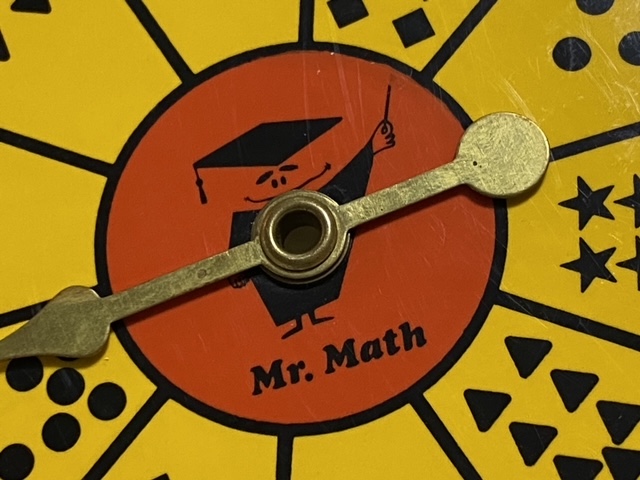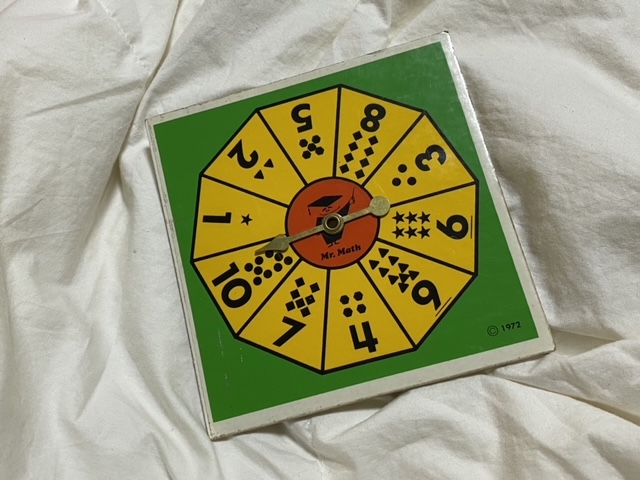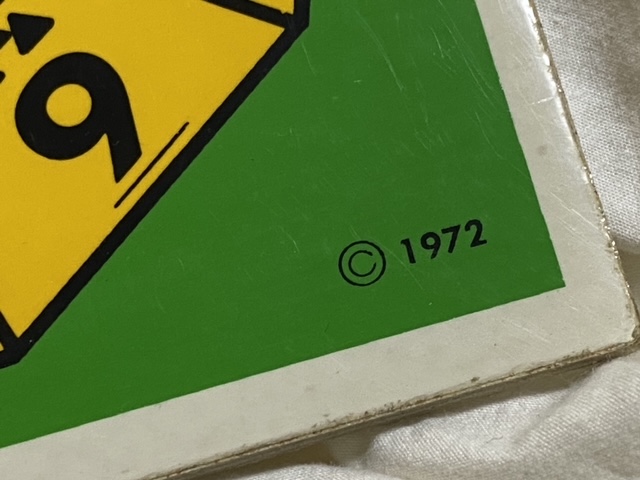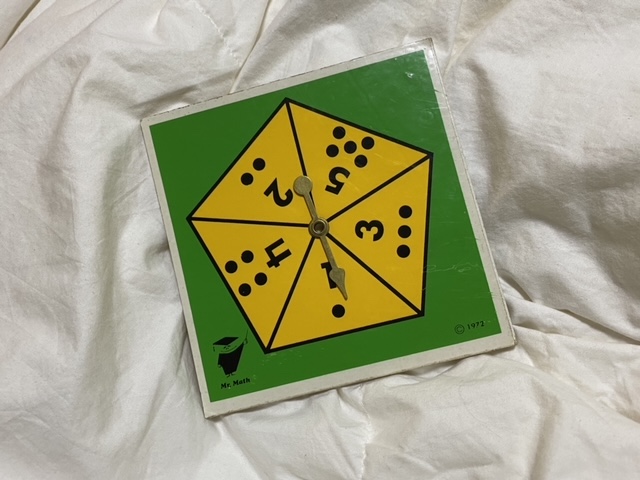Mr. Math vintage 1972 teaching aid tools: 16,200 ppm Lead (90 ppm and up is unsafe for kids)
May 9, 2021 — Sunday
For those new to this website:
Tamara Rubin is a multiple-federal-award-winning independent advocate for childhood Lead poisoning prevention and consumer goods safety, and a documentary filmmaker. She is also a mother of Lead-poisoned children (two of her sons were acutely Lead-poisoned in 2005). Since 2009, Tamara has been using XRF technology (a scientific method used by the U.S. Consumer Product Safety Commission) to test consumer goods for toxicants (specifically heavy metals — including Lead, Cadmium, Mercury, Antimony, and Arsenic). All test results reported on this website are science-based, accurate, and replicable. Items are tested multiple times to confirm the test results for each component tested. Tamara’s work was featured in Consumer Reports Magazine in February of 2023 (March 2023 print edition).
90 PPM Lead (or higher) is unsafe for kids
The amount of Lead that is considered unsafe for items intended for use by children and made today is anything 90 ppm Lead or higher in the paint, glaze or coating, and anything 100 ppm Lead or higher in the substrate. I would not consider this educational tool safe for use by children. Most important to know for context: this item would be illegal if manufactured today.
“But I played with a set like this when I was a kid and I am ok!”
The sentiment expressed in the above quote (or some version of it) is a common refrain, and in response I wrote an entire article for you to share with parents or grandparents (or spouses or friends) whose lack of concern is based on that notion. Here’s a link to that piece here. The fundamental guiding principle that we can all use in a situation like this is “Know Better, Do Better” – why would you knowingly give your child a toxic toy to play with? [Especially a younger child who might put that toy in their mouth!]
“Will my child get poisoned by using this particular educational toy?”
Strangely, this is a complete unknown — there is no manufacturer that has a financial interest in underwriting research to quantify the potential risk of their historic / vintage / legacy products (even though these are products that were often “made to last a lifetime”, and are being handed down through the generations).
There have been several independent studies that demonstrate a basis for real potential concern for toxicants found in vintage toys in general (without identifying specific toys and specific manufacturers of concern). Here’s a link with more information.
In my educated opinion – it is simply not worth the possible risk to allow any kid to play with vintage toys (or vintage educational tools) incorporating such potentially high levels of multiple neurotoxic metals. There are plenty of modern safer choices available today – and they are normally quite inexpensive. Here’s an affiliate link* to educational toys / tools that are made by a reputable brand and therefore likely negative for Lead, Cadmium, Mercury and Arsenic (I have not tested products from this brand, but newly manufactured items made for use by children are strictly regulated): https://amzn.to/3uArOyb
The specific toxicant profile for the spinners pictured above
Below are the exact XRF test results for the math spinners pictured. Please read this article with more information about the testing methodologies used on this website. Note: you cannot do this testing yourself at home (the appropriate XRF instruments are both incredibly expensive and require training and experience to use correctly), which is why I do the testing and report it (free of charge) here on my site so parents have access to this information. If you are interested in having me test an item and report the results on LeadSafeMama.com, please read this article (link). If you have some of the Lead-contaminated items shown on this website, please read this piece discussing what you can do with them.
Note: When I first tested this item I suspected the spinner’s arrow was made of Leaded brass, however more detailed testing revealed that the cardboard backing was printed with inks containing heavy metals (not uncommon for something from 1972!). Because the Lead is in the INK and the product is made of paper (which is more likely to deteriorate and wear than, for example, hard plastic unpainted toys) — I would consider this particular item to be a potentially higher risk item.
#1.) 60-second test, focused on yellow part of laminated cardboard
- Lead (Pb): 16,200 +/- 300 ppm
- Mercury (Hg): 77 +/- 26 ppm
- Chromium (Cr): 14,100 +/- 600 ppm
- Silver (Ag): 30 +/- 6 ppm
- Nb: 1,670 +/- 45 ppm
- Bromine (Br): 18 +/- 5 ppm
- Palladium (Pd): 20 +/- 5 ppm
- Platinum (Pt): 326 +/- 80 ppm
- Zinc (Zn): 549 +/- 42 ppm
- Copper (Cu): 158 +/- 37 ppm
- Iron (Fe): 1,575 +/- 162 ppm
- Indium (In): 72 +/- 11 ppm
- Titanium (Ti): 17,500 +- 900 ppm
#2.) Focus on green part of laminated cardboard
- Lead (Pb): 5,287 +/- 142 ppm
- Chromium (Cr): 4,434 +/- 552 ppm
- Silver (Ag): 33 +/- 7 ppm
- Nb: 1,770 +/- 52 ppm
- Palladium (Pd): 19 +/- 5 ppm
- Platinum (Pt): 276 +/- 74 ppm
- Zinc (Zn): 1,180 +/- 74 ppm
- Copper (Cu): 269 +/- 49 ppm
- Iron (Fe): 1,748 +/- 199 ppm
- Indium (In): 77 +/- 13 ppm
- Titanium (Ti): 33,600 +- 2,200 ppm
#3.) 60-second test — focus on center of brass dial
Reading is possibly capturing some of the yellow background
- Lead (Pb): 4,315 +/- 340 ppm
- Chromium (Cr): 444 +/- 168 ppm
- Zinc (Zn): 292,200 +/- 1,900 ppm
- Copper (Cu): 699,900 +/- 2,500 ppm
- Iron (Fe): 433 +/- 167 ppm
- Titanium (Ti): 949 +- 338 ppm
To see other teaching aids that I have tested, please click here.
As always, thank you for reading and for sharing this work. Please let me know if you have any questions and I will do my best to answer them personally as soon as I have a moment! (Sometimes this can take a while with so many readers on the website, and all of the related questions!) The best thing you can do to support this work is to share articles that pique your interest on your social media pages!
Tamara Rubin
#LeadSafeMama
Never Miss an Important Article Again!
Join our Email List













